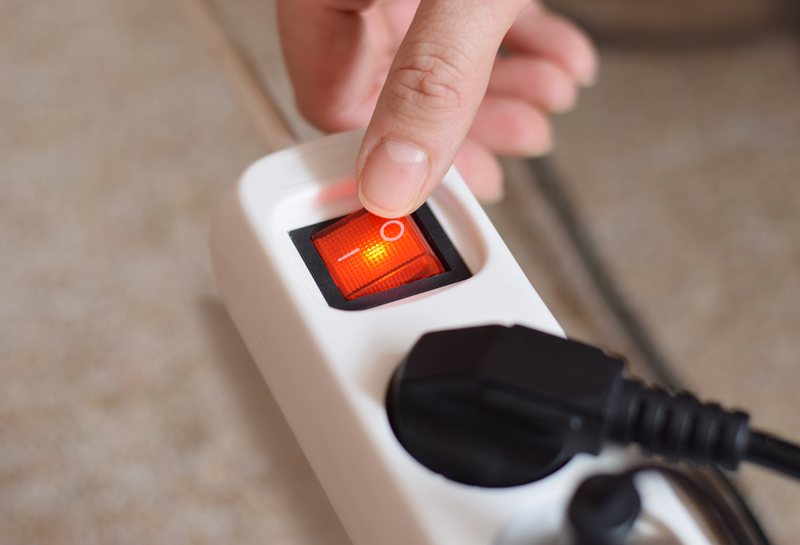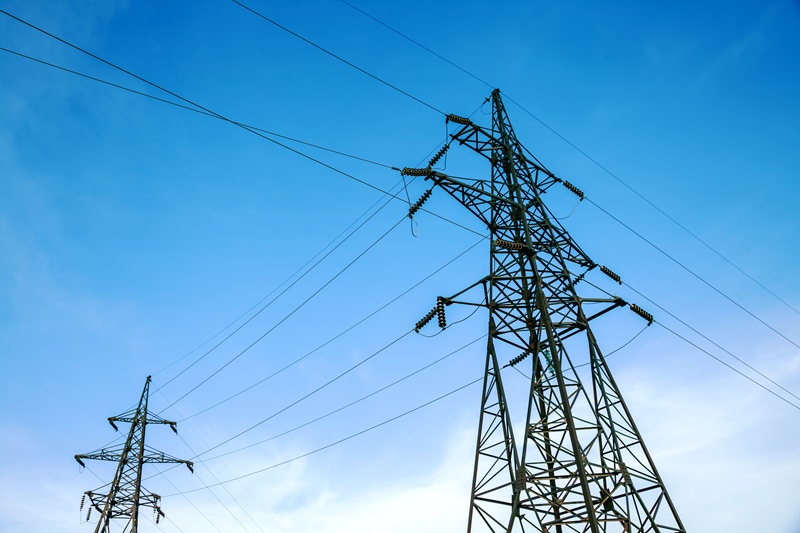The sharpest peak of the energy crisis may be over for this winter, but when preparing for the next heating season, China, which is gradually opening up its economy and therefore needs more natural gas, may start to influence energy prices significantly more than Russia.
| Price zone | Average exchange price | Change (previous week) |
| Estonia | 116.4 EUR/MWh | +11,2% |
| Latvia | 116.6 EUR/MWh | +11,3% |
| Lithuania | 118.4 EUR/MWh | +13,0% |
| Finland | 70.3 EUR/MWh | -22,0% |
The average price of electricity last week in Estonia was 116.4 €/MWh (+11.7 €/MWh compared to the previous week). The cheapest hour was at 3 a.m. on the night of Friday, 3 March, paying €21.53 per megawatt hour. The highest price for electricity had to be paid at 8 p.m. on the evening of Monday, 27 February, with 193.39 €/MWh.
The difference in electricity prices last week between Estonia and Finland increased to €46 on average, one of the reasons for which was twice the wind energy output compared to the previous week. Finnish wind farms produced 400 gigawatt-hours of renewable electricity last week, while wind turbines in the Baltic countries produced approximately 100 gigawatt-hours. Next Wednesday, the tests of Finland’s new nuclear power plant should continue, during which electricity will be produced at full capacity for the market.
Europe must maintain consumption discipline
The average gas price for the week was 50.2 €/MWh (-1.8 €/MWh compared to the previous week). The price of natural gas has fallen to an 18-month low despite weather forecasts predicting a colder week.
The International Energy Agency (IEA) warns that European gas supplies may be hit harder this year by rising demand in China, rather than by a complete shutdown of Russian supplies. China has become a big question mark in terms of gas supplies, but under a growth scenario, the country’s LNG imports may grow by as much as 35% this year if prices continue to fall and the economy returns to rapid growth. Such a scenario would significantly increase international competition for LNG and could raise prices to unsustainable levels, as seen last summer.
China has significantly eased its COVID-related restrictions that caused the country’s energy use drop significantly last year, while allowing Europe to import record amounts of LNG. Thanks to energy savings and a mild winter, LNG allowed Europe to cope with the heating season in a situation where pipeline gas supplies from Russia were reduced by 80%.
While Europe’s LNG imports increased by more than 60% last year, they decreased by 22% in China. It is not yet known what this year will be like, because the difference between the smallest and the largest growth scenario by the IEA is 40 billion cubic meters of natural gas. This corresponds to 8% of Europe’s current needs. The IEA forecasts that China’s gas use will grow by 7% this year. Europe, meanwhile, has reduced its gas consumption to a record extent: it has fallen to 522 billion cubic meters from 609 billion cubic meters in 2021 and is expected to fall further this year to 505 billion cubic meters. According to both the European Union and the IEA, maintaining consumption discipline is the main factor in coping with the energy crisis.
The IEA predicts that European LNG imports will set a record this year as well, reaching 180 billion cubic meters. Last year, the region’s LNG imports grew by 60% to 170 billion cubic meters. The IEA estimates the volume of Russian pipe supplies at 30 billion cubic meters.
Thanks to the increase in renewable electricity, Europe’s CO2 emissions were decreased
Thinking about next autumn, the forecast made by Kadri Simson, Commissioner for Energy at the European Commission, adds a little optimism that the economic union will end this heating season with an average level of gas reserves at 50%. Last November, the Commission urged member states to make an effort to have at least 45% gas left in storage by 1 February. Today, however, it is as much as 59%. According to Kadri Simson, Russia’s energy sabotage has failed because, although supplies have fallen from 155 billion cubic meters to 62 billion cubic meters, Europe has coped. She considers Europe’s energy security to be stronger in several aspects and less dependent on Russia than it was a year ago. At the same time, it should be borne in mind that only the first battle has been won. Europe still needs to work seriously to diversify its sources of supply, increase renewable energy production, reduce energy consumption. And finally, gas reserves must be 90% full again by 1 November in order to face the new winter.
Although the energy crisis is considered to be over for this winter, this does not mean that winter itself has ended. Britain is preparing for a strong cold wave expected this week, which will take temperatures six degrees below their 30-year average.
For the first time since last February, coal imports to Europe have decreased, indicating that the peak of the energy crisis is over by this winter. The main importers of coal are the Netherlands, Belgium, Germany, France, Great Britain, Italy and Spain with a total of 6.8 million tons in January. The figure is smaller by 7.5% than in January and the lowest since last February. On the one hand, demand has decreased, and on the other, sufficient storage levels have been achieved. The decrease in coal demand has also been supported by the drop in the price of natural gas and the rise in the CO2 quota price.
CO2 emissions in total in Europe decreased last year by 3%, that is by 70 million tons, according to the IEA. The main factors were a mild winter, energy saving measures and an increase in green energy production. Emissions from buildings and industry decreased the most, but emissions from the energy sector rose by 3.4%, primarily due to coal plants launched to alleviate the energy crisis. A 15% increase in wind and solar generation helped reduce the impact of fossil fuel power plants, helping to push it ahead of both gas and nuclear power in terms of volume. Globally, however, CO2 emissions rose to record levels.
The weekly average price of CO2 was 96.5 €/t (-1.6 €/t compared to the previous week). At the beginning of last week, the price of a quota ton rose above €100 for the first time, but by Friday it had fallen by almost €8. The end of April is the deadline for the industry subject to CO2 quotas, when the corresponding amount of quotas must be redeemed for the CO2 emitted over the previous year. This usually creates buying pressure on the market because someone is always short of quotas. At the same time, part of the industry gets a certain amount of allowances for free, and since some countries have already started distributing these free allowances, this has a calming effect on the market price.
Speaking of nuclear plants, Sweden’s Ringhals 4 (1,130 MW) is still under repair and should return to the market next Sunday. The Oskarshamn (1,400 MW) reactor is also being serviced this week. The next deadline for the resumption of electricity production at Olkiluoto 3 is 13 March, regular electricity production should start on 15 April. On Thursday, a committee of France’s lower house of parliament adopted amendments to a bill that would cancel the goal of reducing the share of nuclear energy to 50% by 2035. This target was established in law in 2015 under then-President Francois Hollande. Nuclear generation currently accounts for around 70% of France’s electricity.
The energy ministers of 11 European Union countries agreed that closer cooperation between the nuclear energy sectors would be encouraged to boost the industry. The union includes Bulgaria, Croatia, the Czech Republic, France, Hungary, Finland, the Netherlands, Poland, Romania, Slovakia and Slovenia. Belgium, Italy and some Baltic countries were also considering joining the alliance, but which of them exactly, the French Ministry of Energy did not specify.
Eesti Energia’s plants in Narva were on the market last week with 465 MW. The long-planned and month-long annual maintenance of Eesti Power Plant’s Unit 5 started on Wednesday. All other steerable production facilities are available for the market.
The price of electricity is formed on the power exchange for each hour depending on the production capacity and consumer demand for that particular hour, as well as on transmission limitations between countries.
Olavi Miller, Market Analysis Strategist at Eesti Energia
The market overview has been prepared by Eesti Energia according to the best current knowledge. The information provided is based on public data. The market overview is presented as informative material and not as a promise, proposal or official forecast by Eesti Energia. Due to rapid changes in electricity market regulation, the market overview or the information contained therein is not final and may not correspond to future situations. Eesti Energia shall not be responsible for any costs or damages that may arise in connection with the use of the information provided.



